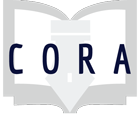Assignment
Mapping Audience & Purpose: Evaluating Sources
This lesson is designed for lower-division composition undergraduate students to learn frameworks for evaluating the audience and purpose of various information sources. After analyzing an array of sources for audience and purpose students can dig in to a source in more detail looking for markers of authority and discussing strategies for verifying claims.
Students will be able to:
1) Articulate different markers of authority in a variety of information contexts
2) Identify the purpose and audience of different information formats
Information Literacy concepts:
Individual or Group:
Ability Level:
This lesson plan was designed for 60 minutes and delivered to 42 classes in 6 days as part of a summer early start composition program. We needed something that was fun, interactive, could be delivered by many different instructors back to back, and supported the overall course goals of reading rhetorically.
Prior to teaching the lesson we assembled six self contained "research stations." These were boxes (but could also be dedicated spaces) filled with information sources with various audiences/purposes, worksheets to be completed in small groups, stickers to make the worksheets faster, and writing utensils.
The librarian begins the lesson with a warm-up question on everyday research, this is followed by a group map and discussion on the audience and purpose of information sources, finally the session concludes with an in-depth dive evaluating one popular source.
Pictures of our research stations are included in the PDF lesson plan. We used the following sources in our boxes:
• #1 Multimodal news piece: https://highline.huffingtonpost.com/articles/en/poor-millennials/
• #2 an opposing viewpoints opinion piece from a Marijuana policy institute [proxied link removed – sub in your own opinion piece here]
• #3 a news article: https://ktla.com/2019/05/29/contractors-like-uber-lyft-drivers-would-get...
• #4 a video: https://www.ted.com/talks/angela_lee_duckworth_grit_the_power_of_passion...
• # 5 a government report from a website: https://www.nimh.nih.gov/health/statistics/mental-illness.shtml
• # 6 a scholarly journal article [proxied link removed – sub in your own short article here]
• #7 an encyclopedia article from Gale Virtual Reference
• #8 an edited scholarly monograph on a variety of topics pulled from our stacks

